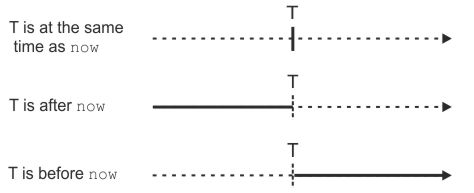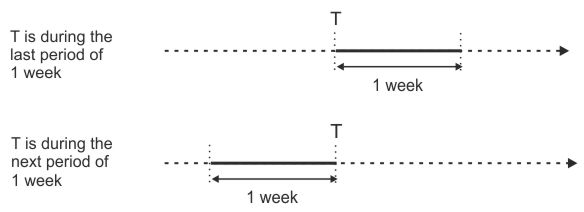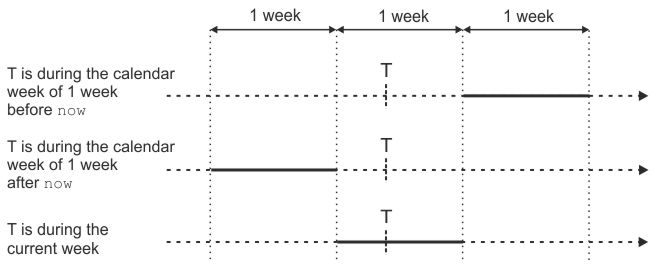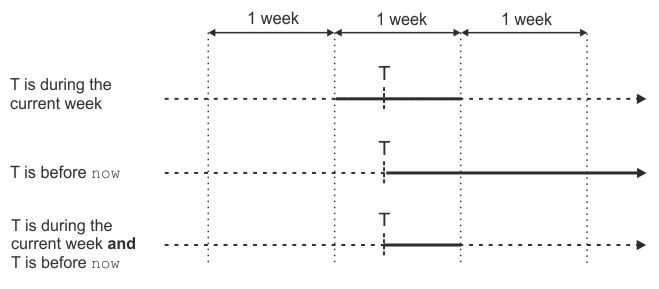Time logic based on the current time
When you use time operators in rules to specify time conditions, the system applies a time logic to decide what events meet the time conditions. If the conditions refer to now, the result depends on the timestamp of the event and its relative position in a timeline to the variable now.
Basic conditions
The diagrams below show when an event meets the time conditions. T represents the timestamp of the event. The solid line represents the values that now can take when the event meets the time condition. The dashed line represents the values that now can take when the event does not meet the time condition.
An event can occur at, before, or after the variable now.
For example, the following rule executes
if the purchase event is
before now. To meet the
time condition, the value of now must
be greater than the timestamp of the event.
when a purchase event occurs
if this purchase event is before now
then
emit a new subscription eventNegative conditions
An event can occur outside of a specific time period that refers to the current time.
For example, the following rule executes
if the purchase event does
not occur during the last period of 1 week. To meet the time condition,
the value of now must
be smaller than the timestamp of the event, or greater than 1 week
after the timestamp of the event.
when a purchase event occurs
if it is not true that this purchase event is in the last period of 1 week
then
emit a coupon expired eventSliding windows
An event can occur during a time period that slides depending on when the event occurs.
For example, the following
rule executes if the purchase event occurs
in the last period of 3 days. To meet the time condition, the value
of now must be greater
than the timestamp of the event, but not more than 3 days greater
than this timestamp.
when a purchase event occurs
this purchase event is during the last period of 3 days
then
emit a new couponTumbling windows
An event can occur during a time period that tumbles depending on when the event occurs.
For example,
the following rule executes if the purchase
event occurs during the current week. To meet the time condition,
the value of now must
be within the same week as the timestamp of the event.
when a purchase event occurs
this purchase event is during the current week
then
emit a new couponCumulated conditions
An event can occur during a time period that meets several time conditions that refer to the current time.
For example, the following
rule executes if the purchase event occurs
during the current week, and before now.
To meet the time condition, the value of now must be within the same week
as the timestamp of the event and greater than this timestamp.
when a purchase event occurs
this purchase event is during the current week
and this purchase event is before now
then
emit a new coupon